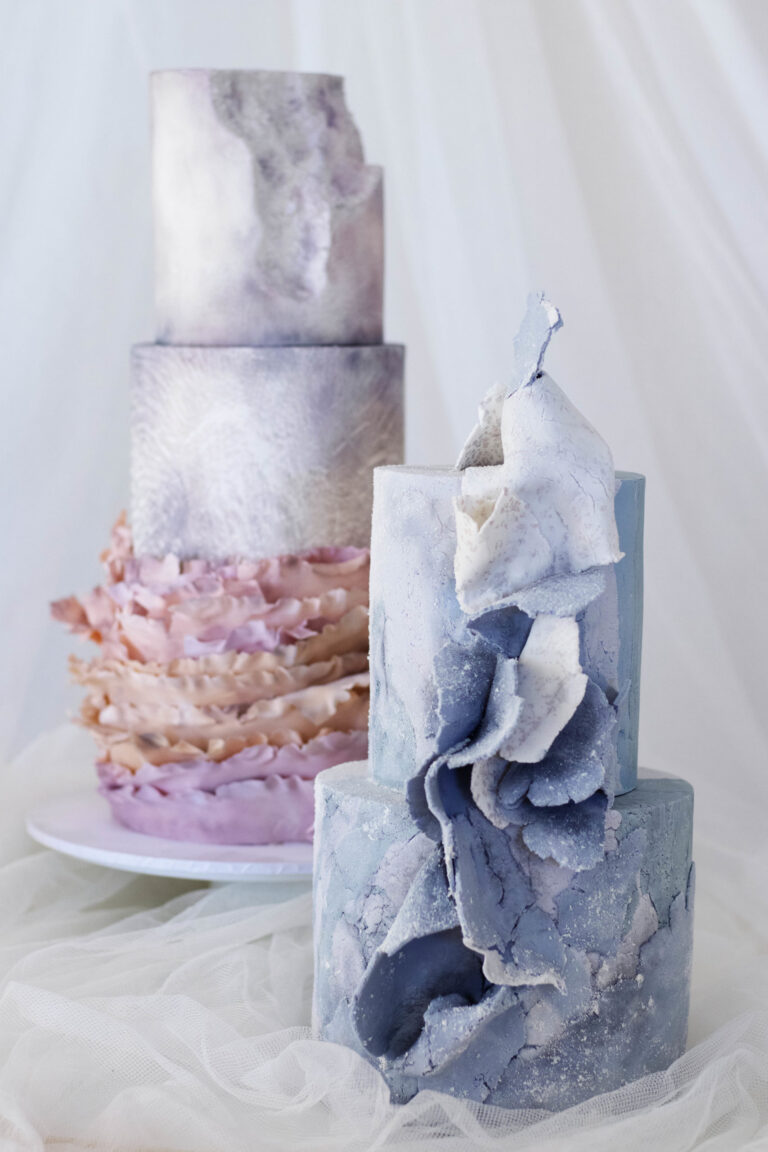Why all the fuss over poufy white fluff?

The skill of meringue-making is a common kitchen artistry that all aspiring cooks should have in their back pockets. The ability to whip up a perfect bowl of foamy egg whites forms the foundation for perfecting a multitude of desserts/confectionery , some of which include the prevalent Pavlova, mousse, nougat, marshmallows, buttercream, semifreddo, macarons, the list goes on.. The exact measurements in meringue recipes vary according to intended use, but the fundamental techniques are always the same.
However, before you flex those guns’ and crack out the trusty whisk, here are some meringue facts you need to know:
The two most common methods of making meringue:
Italian Meringue – A stable meringue that is made by slowly drizzling hot sugar (112°C to 116°C) into egg whites as its being whipped.
French Meringue – A more basic meringue whereby sugar is gradually rained into the egg whites as it’s being whisked, with icing sugar folded through at the end.
Less common is Swiss Meringue, which is made by heating the sugar and whites over a bain marie to 110-120°C and then beating the mixture until stiff.
Types:
Hard and soft. Hard meringue is made with a higher sugar content and baked for a long time period at a low temperature. Soft meringue is often used to ice tarts (i.e.lemon meringue tart), cakes or in desserts (i.e. floating islands).
Today, we’re going to tackle the kinder beast, the French Meringue technique. The recipe is easy to remember as it simply calls for equal quantities of egg whites, caster sugar and icing sugar.
BASIC FRENCH MERINGUE:
INGREDIENTS:
200g egg whites *NOTE: Ensure no residual egg yolk. Traces of yolk (even small ones) can prevent the whites from whisking up)
200g caster sugar
200g icing sugar (sifted)
EQUIPMENT:
A squeaky clean mixing bowl
Whisk (you can either do this by hand or electric mixer)
Spatula
METHOD:
Firstly, make sure that all of your equipment (especially the mixing bowl and whisk) are clean and grease-free. Fat (even in small amounts) will prevent the whites from foaming up. Preheat your oven to a low 120°C. If you’re using a fan forced oven set the temperature to 100°C/105°C.
Place the whites in the bowl (you can add in two drops of lemon juice OR a pinch of cream of tartar to help stabilise the mix, but it would still work without) and whisk on high till it becomes a soft foamy mass (i.e.bubble bath). DO NOT add in any sugar before it reaches this stage.
At this point, add in the caster sugar a little at a time, whisking continually. You’ll notice the meringue getting denser (resembling whipped cream). Once you’ve finished adding in all the sugar, keep whisking until the meringue is stiff (test it out by turning the bowl upside down. If nothing slops out, you’re set).
Tip the icing sugar into the meringue and FOLD together, confidently but gently, from the outside in (in a figure-of-eight motion). Once the icing sugar is mixed in, STOP folding. Overworking the meringue will cause it to collapse and lose its air. What you’re left with is a pearly, glossy bowl of light meringue that is now ready to be used as your recipe directs *Pat on the back.
To make crispy meringue shells, you can choose to pipe you meringue onto a tray lined with baking paper; either in rosettes using a star nozzle, or in long lines to create logs. If you can’t be bothered, you can spoon them out onto the tray as big blobs (for those wanting a more “organic” look).
These go in the oven for one-and-a-half to two hours. Best thing to do is to turn off the oven after its done baking, and leave the shells in the oven overnight with the door slightly ajar. This allows them to dry out completely, producing crisp shells.
SHIRAZ STRAWBERRY ETON MESS:
You can put your meringue biscuits to good use by whipping up this simple dessert favourite. Traditional Eton Mess is usually made with fresh strawberries, cream and meringue biscuits (some add yoghurt in as well). This is a personal rendition of the dessert with the addition of red wine.
INGREDIENTS:
Meringue shells (about 80g worth)
300ml fresh cream
40g caster sugar
1/2 punnet Fresh strawberries (roughly chopped)
For strawberry compote:
Punnet of strawberries (whole, with leaves off)
1 1/2 cups red wine (use a cheap cleanskin; you can substitute with other grape variety though I’d stay away from pinot noir)
1 cup brown/white sugar
Rind of 1/2 an orange (grated)
A dribble of vanilla essence/extract/paste/pod
Put all ingredients for the compote into a saucepan and place over medium heat. Cook at a simmer until mixture resembles a chunky jam (make sure you stir from time to time to prevent from burning).
When it has reached a thick gloopy consistency, pour in a splash (about 1/2 cup) of ADDITIONAL red wine – mix and take off the heat. Store covered in the fridge to chill.
Whisk up the cream together with the 40g caster sugar until firm peaks.
To assemble, mix the cream, compote, fresh strawberries and CRUSHED meringue biscuits together in a bowl. Serve in a large dish or in individual glasses. Serve with additional chopped strawberries to garnish (makes about 6-8 serves).











2 Responses
Hi, I’ve been trying to bake meringue for days now. I’m perfecting it to build a business but every time I bring it out of the oven, the meringues get too sticky EVEN if I store them on a air-tight container. I feel like I’m wasting my time and money. Please mentor me. I will try your recipe and I’ll see how that goes.
Hiyee I’m experiencing the same problem too! Have you figured out why?